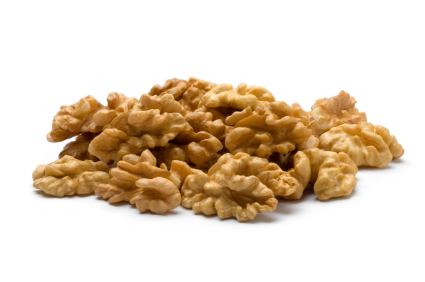The ancient Romans used these edible seeds for medicine and food. They’re full of nutrients that fight disease—plant proteins, sterols, dietary fiber, and antioxidants.
They raise your good LDL cholesterol and improve your insulin response.1 Both are critical in lowering your risk for diabetes. In fact, eating just a handful two times a week can lower your risk by 24 percent.2
You’ll even benefit if you don’t eat that much. After following roughly 140,000 people for 10 years, Harvard researchers found that eating them once a week can lower your risk by 13 percent. Eating them even once or twice a month lowers your risk by four percent.
And every little bit helps. With 366 million people suffering from diabetes worldwide, your risk might be greater than you think.3 70 percent of Americans already have some form of it. It’s an epidemic. Diabetes is linked to other deadly diseases like heart disease and strokes.4
This mainstay of heart-healthy, Mediterranean-type diets is a portable powerhouse…
| When eating walnuts do not discard the skin – the whitish, waxy, flaky, outermost part. That’s where you get the biggest health bang. 90 percent of the nut’s phenolic acids, tannins, and flavonoids are found in the skin. |
The walnut.
Previous studies found that eating nuts reduces your risk of diabetes. But this is the first time researchers zeroed in on walnuts.
The type of fat you consume plays a major role in causing diabetes. Eating unsaturated fats and unrefined oils helps reduce your risk.5 All tree nuts, including walnuts, are high in monounsaturated fats (MUFAs). These help fight dangerous belly fat, a sign of diabetes.
Walnuts are also rich in polyunsaturated fats (PUFAs). That includes omega-3 and linoleic acid. They improve arterial function that allows proper blood flow.6
Many believe that because of their high caloric and fat content, walnuts will cause weight gain if you eat them every day. But contrary to popular belief, walnuts don’t cause weight gain.7 When combined with a healthy and active lifestyle, walnuts can even aid in weight loss. And a healthy weight will only further help prevent diabetes. So add a little crunch to your meals and keep diabetes at bay.
Like this Article? Forward this article here or Share on Facebook.
References:
1 http://www.ncbi.nlm.nih.gov/pubmed/21157477
2 http://jn.nutrition.org/content/143/4/512.full.pdf+html
3 http://www.idf.org/diabetesatlas/5e/diabetes
4 http://diabetes.niddk.nih.gov/dm/pubs/stroke/
5 http://www.ncbi.nlm.nih.gov/pubmed/?term=Ris%C2%B4erus+U%2C+Willett+WC%2C+Hu+FB.+Dietary+fats+and+prevention+of+type+2
6 http://www.ncbi.nlm.nih.gov/pubmed/?term=Ma+Y%2C+Njike+VY%2C+Millet+J%2C+Dutta+S%2C+Doughty+K%2C+Treu+JA%2C+Katz+DL.
7 http://www.ncbi.nlm.nih.gov/pubmed/16277792

